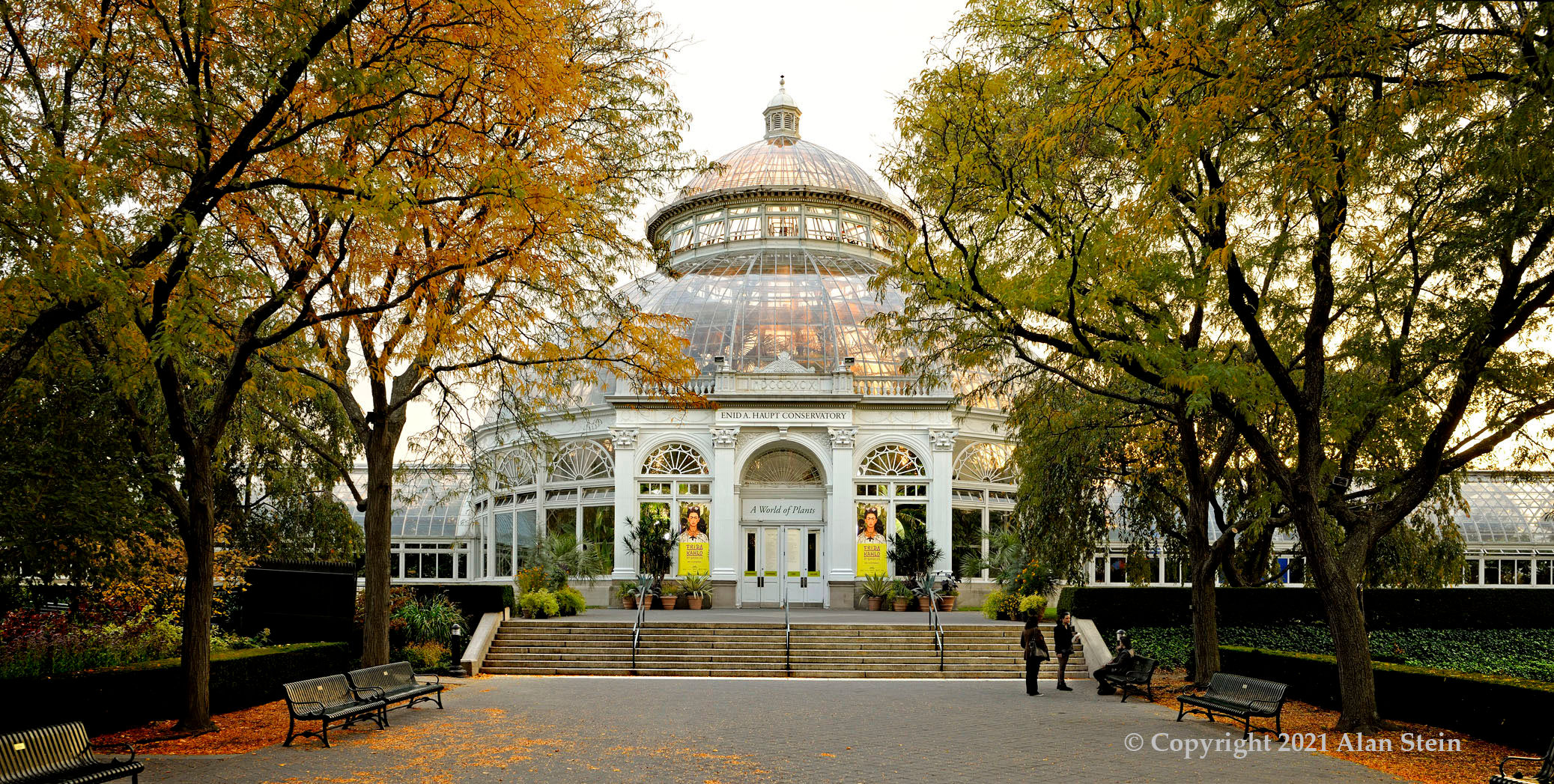
Enid A. Haupt Conservatory
New York Botanical Gardens, The Bronx, New York, 1902
Architect: Lord & Burnham
The Enid A. Haupt Conservatory located on the grounds of the 120-year-old New York Botanical Garden is the United States' largest Victorian glasshouse. This New York City landmark opened in 1902; it has served as a year-round, must-see destination for plant and conservatory lovers alike. The Palm Court, which features an awe-inspiring 90-foot dome, is home to a reflecting pool and lush tropical plants. Eleven distinct habitats are available for eco-tourists, nature-lovers, horticulturist, scientists, and everyone in between.
Nathaniel Lord Britton and his wife Elizabeth, after having visited the Royal Botanical Garden, Kew, in England on their honeymoon, returned to New York determined to build something just as magnificent and beautiful for their city. Lord and Lady Britton, both of whom were botanists, along with the Torrey Botanical Club decided that they would make such a dream happen. The site on which the conservatory and the rest of the botanical gardens sit, belonged to tobacco merchant Pierre Lorillard. In April 1891, the New York State Legislature was able to set aside 250 acres of land for the gardens. According to Ogden Tanner, in The New York Botanical Garden, Cornelius Vanderbilt, Andrew Carnegie, and J.P. Morgan, along with Lord Britton acting as secretary, set up a corporation for:
“...the purpose of establishing and maintaining a botanical garden and museum and arboretum therein, for the collection of and culture of plants, flowers, shrubs and trees, the advancement of botanical science and knowledge, and the prosecution of original researches therein and in kindred subjects, for affording instruction in the same, for the prosecution and exhibition of ornamental and decorative horticulture and gardening, and for the entertainment, recreation and instruction of the people.”
Lord & Burnham, a boiler and greenhouse manufacturer in the U.S. since 1849, was picked to be the conservatory designer and work was begun on January 3, 1899. The chief designer of the project was Lord & Burnham architect, William R. Cobb. The Palm House (at the Royal Botanical Garden at Kew) and the Crystal Palace (designed by Joseph Paxton) served as the inspiration for the Bronx Conservatory. The building was built by John R. Sheehan under contact to the New York City Department of Parks and was primarily constructed with steel, cast iron, wood and glass. Unfortunately, renovations that took place in 1935 and again in 1950, significantly changed the original Italian Renaissance style that Mr. Cobb designed and many of the elaborate decorations were removed. In fact, in a report by Beyer, Blinder, Belle Architects and Planners, published in October 1990, it is noted that in 1935 the renovations sought, "to halt the deterioration of the endangered building and bring it up to the prevailing taste of European Modernism." Even more unfortunate was the fact that by 1978, the Conservatory was in such a state of disrepair that plans were being made for its demolition.
However, Enid Annenberg Haupt, a philanthropist who died in 2005, made a five million dollar contribution for the Conservatory's restoration and a five million dollar endowment for its continued upkeep, hence, the renaming of the Conservatory to the Enid A. Haupt Conservatory. Edward Larrabee Barnes, an architect who studied at Harvard and who owned an architecture firm in Manhattan, was the designer for this major renovation.
The original design by Lord & Burnham was very typical of greenhouses, in that the building was made with a series of large glass pavilions that were laid out symmetrically around the central Palm House pavilion and which were open on the inside. There are 11 pavilions that together form a 512-foot-long 'C' shape, with the grand dome in the center. The glass was made with standard sized, 16-inch panels, wherever possible. The Palm House uses 20-inch glass panes. Clear, ground, and second quality French and American glass was used, depending on the orientation of the panel. All of the vertical panes were left clear, while some of the roof glass was ground. Waterproof, moveable shades were installed for shade control where the ground glass was not sufficient for shading.
The Conservatory has been a major and important resource in the study of horticulture since it was built. Every year, it is estimated that hundreds of scientists travel to the Bronx conservatory to study the exhibitions of rare palms and cacti that are housed there. Add to that the thousands of people who visit every year and it's easy to see why the Enid A. Haupt Conservatory, of the New York Botanical Gardens has been called the crown jewel of New York City.
Photo Credits: Alan Stein & Nancy Virts, The LuEsther T. Mertz Library of the New York Botanical Garden (Historic Image)


